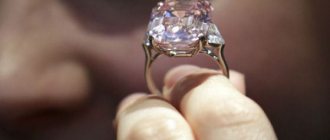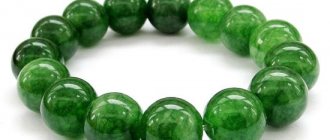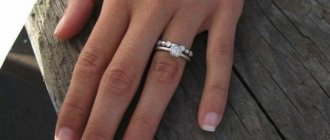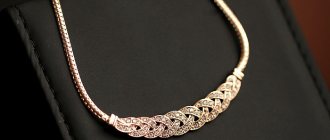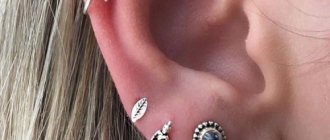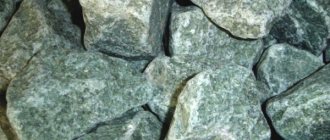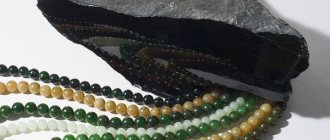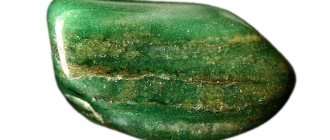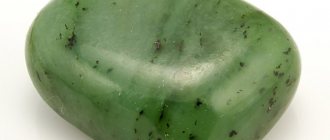Jade is a stone with unique physical properties, due to which it has been actively used by people since Neolithic times.
Translated from Greek, the word “nephrite” (νεφρός) means “kidney”. The gem received its name due to the fact that the ancient Greeks attributed to it the ability to cure kidney and liver diseases. The Chinese speak of this nugget as a stone of life: it is believed that it changes fate.
Favorite stone of the Celestial Empire
From Biruni we know that “belt buckles were cut from pieces of jade.” This in itself speaks about the strength of stone products.
In China, records were cut out of jade, which could be used to pay like real money.
Head and torso fragment of a jade horse figurine, East Chinese Han period (25–220 AD)
Jade Dragon, Western Han Dynasty (202 BC - 9 AD)
Dagger with jade handle, India, 17th – 18th centuries. Louvre
Breast jadeite from the Maya of the classical period (195 mm or 7.7 at maximum)
Sa Hu whitenh double-headed lingling-o white jade pendant from Vietnam
Double-headed Maori green stone pendant (pekapeka) from New Zealand
A large "mutton fat" jade is displayed in the foyer of the Khotan Cultural Museum
A selection of antique handmade Chinese jade buttons.
There are many jade items in museums and private collections around the world. From the Neolithic ax of our ancestors to the dishes and seals of emperors.
Now, like hundreds of years ago, every Chinese family strives to have a jade object in their home. After all, it is believed that the gem will attract prosperity and longevity to the family. There are one and a half billion Chinese on Earth. And mining is prohibited (a moratorium has been imposed). Therefore, Mother Russia legally supplies about 250 tons of gems to the Celestial Empire annually (officially). One can only guess how much goes beyond customs. Only discovered jade is measured in tons.
So they sell all kinds of products made from Russian jade in China.
From jasper to Maori stone
Biruni called jade jasper .
Expert opinion
Semenishcheva Polina
Specialist in mineralogy. Graduated from St. Petersburg Mining University.
The term yashm (yasb) corresponds to the Greek taoutg and Latin jaspis. However, in Greek it is probably borrowed from Phoenician. Compare with Hebrew yashfeh, Assyrian yashpu.
Nowadays, jade can be called:
- stone of axes;
- kidney stone;
- Maori stone.
Abroad, jade and jadeite are called by a common name - jade .
And the word jade itself is “made” from two Greek words: nephros - kidney and lapis - stone.
TYPES AND COLORS OF JADE
Types of jade are divided by color as follows:
| White | Despite the name, there are no completely white nuggets. This is the name for light stones with a yellow, gray or green tint. |
| Black | Highly respected by jewelers. Depending on the components included in it, jade acquires a shade from light to dark or black. |
| Green | Green gems are light green, emerald, with bright, rich shades. |
| Brown | Brown jade can be plain or with a yellowish tint. |
| Pink | Pink jade looks beautiful and unusual, the color of which is determined by isomorphic impurities. |
| Red | Red stones are found extremely rarely. |
| Light blue, blue | Blue and cyan minerals are called dianites. Like the red ones, they are very rare. |
| Yellow | Yellow gems are rarely found in nature. |
| Grey | Gray jade has a more uniform color. |
Gems without inclusions are used in jewelry.
Nuggets with inclusions and spots are used for making interior items.
The magical properties of jade depend on the color of the stone.
Green jade figurine (New Zealand)
Due to the special reverence for the gem, China created its own classification:
Khotan
“Khotan” is a milky-white gemstone with a “greasy sheen.”
Objects made from such stone could only be used by the Emperor.
Khotan
Xiuyan
The mineral is colored greenish, but is transparent.
Sometimes it is called “azure”.
It is believed that the gem prolongs youth.
Xiuyan box with sapphire
Lantian
The nugget is yellow in color and sometimes has inclusions.
Lantian
Nanyang
The most common type of gem.
Usually colored greenish-yellowish, sometimes with pink streaks.
What to combine Nanyang with
Mineral of unknown origin
How the mineral is formed is still unclear. In any case, geologists have different theories.
- Jade deposits are possible at places where magma and rocks meet.
- Schists, marble and gneisses are common sites for jade.
- The deposits are associated with large massifs of granites and are found in metamorphic rocks in the contact zones of dolomites.
- Often found in placers, streams and rivers.
Expert opinion
Semenishcheva Polina
Specialist in mineralogy. Graduated from St. Petersburg Mining University.
Note : mineral from placers is valued more as it is the most durable.
There are deposits where the mineral was born under the influence of magma on dolomites rich in magnesium.
Artificial jade
In countries where jade is inexpensive, things like counterfeiting are usually not done. However, in the East, where the stone is highly valued, its substitutes are still found. Jade is counterfeited with glass, which is clouded with pigments and additives containing fiber. At first glance, it is difficult to distinguish such a product from jade. To do this, you need to take a close look at the surface.
Glass, unlike jade, is polished to a shine. Polished jade has a slightly matte surface, which can be seen under magnification. If you look at such a stone with a magnifying glass, you will notice small scratches and defects.
Silver jade jewelry
Sometimes in India and China, under the guise of jade, you can find other rocks, tinted green; their structure is very different from natural stone, but with the help of cunning tricks, sellers manage to sell such a fake. There is one simple way to determine whether it is real or not - to try to scratch it slightly: jade is very hard and such actions will not cause any harm to it.
Varieties
Dianite . Tradename. Blue jade. The name was received in honor of Princess Diana.
Color from gray-blue to gray-blue.
Chinese masters, who have studied the mineral for centuries, also share its varieties.
For them, there are two main types of this stone:
- Shan-liao - from the mine workings.
- Tzu-er-liao - from streams and rivers.
The latter is valued much higher, since over millions of years, as a rule, only the “heart of jade” remains in the pebbles - the hardest and most homogeneous material.
Their prices differ dramatically.
Talismans and amulets
Jade amulets are universal protection against misfortunes and failures. To attract changes for the better, you can use talismans made of white stones. This mineral helps you find love. Rings with white jade bring family well-being.
Jade talismans are good for children. If you cut a lock on a piece of jade and put such a talisman on a child’s neck, this will strengthen his connection with life and protect him from evil spirits.
Other symbols can be carved on jade plates, which will give the talisman certain properties. For example:
- a fish or two phoenixes - for abundance and prosperity;
- peach - for longevity;
- bat - to attract fortune;
- tangerine - for love;
- bamboo - for protection by higher powers;
- lotus - to achieve holiness.
Jade jewelry helps you achieve your goals faster and overtake your competitors. They enhance courage and intelligence, which is especially good for people with a military background. The stone is suitable for all professions that require the ability to make informed decisions, calculation, and foresight. Jade rings help you harmoniously combine career and family. The best combination with a mineral is silver.
Jade beads are used to improve heart function. Green beads are good for recovery after a stroke. Jade brooches become excellent talismans that improve health.
If you need to protect your home from disasters, you can use red jade figurines.
Properties
Jade is a hydroxysilicate of calcium, iron and magnesium.
Belongs to the group of amphiboles. Microscopic examination of jade showed that it consists of countless matted fibrous crystals.
Expert opinion
Semenishcheva Polina
Specialist in mineralogy. Graduated from St. Petersburg Mining University.
Interesting : Kevlar (from which body armor and helmets are made) is made using “nature technology”. The material is entangled para-aramid fibers.
Physico-chemical
- Attempts to break a piece of jade from a rounded block with a hammer invariably end badly: the stone rings like steel, and hot sparks fly from the hammer like fireworks.
- Has weak pleochroism.
- The density of the gem increases with the amount of iron admixture.
- There is no variance.
- Not affected by acids.
- The stone is resistant to abrasion.
Lithotherapist's book
- The Turks used the mineral to improve digestion.
- One of the names of the gem is kidney stone. It is believed that massage with a heated stone alleviates the condition of kidney and liver diseases.
- Now lithotherapists are increasingly using jade (except white) to treat the kidneys.
- In China, the gem is used as a strong biostimulant.
Since ancient times, healers and shamans believed that the gem:
- Protects against intestinal disorders. Avicenna used this property to treat patients.
- Prevents disorders in intervertebral discs.
- Beneficial for the eyes.
- Helps with headaches and dizziness.
Expert opinion
Semenishcheva Polina
Specialist in mineralogy. Graduated from St. Petersburg Mining University.
Interesting : Chinese lithotherapists use pharmacological collections in the treatment of nephritis. This means that jade is widely used in treatment.
The magic of the sacred stone
Jade is a pretty tough teacher
